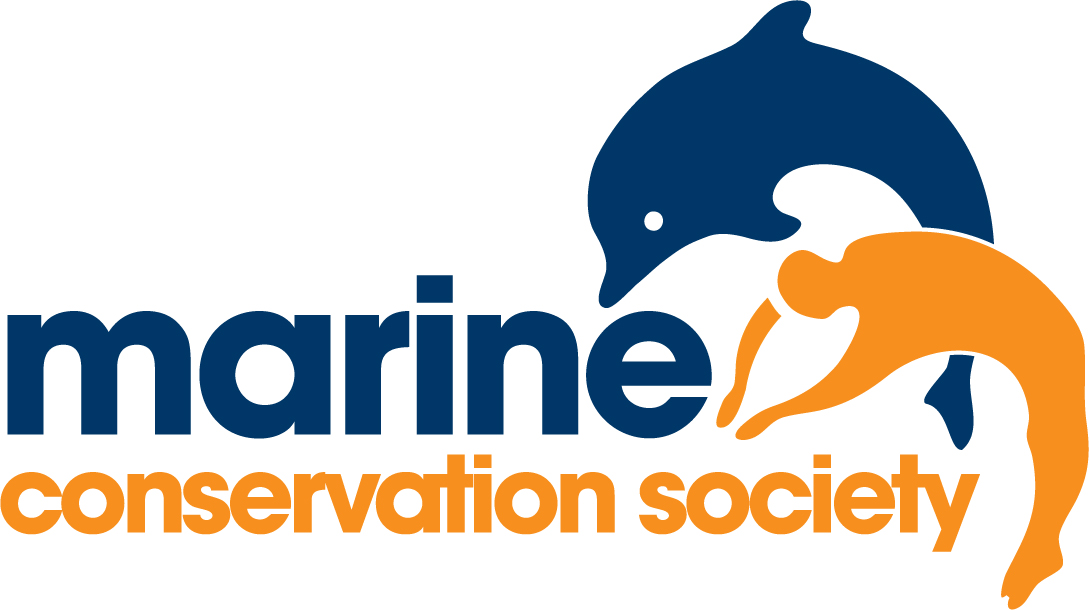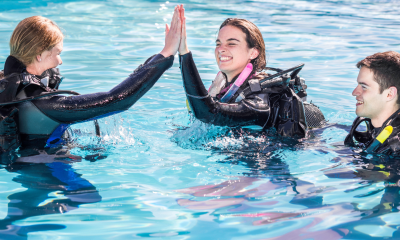Marine Life & Conservation
North Sea Cod should remain off the menu despite huge efforts to improve stocks, says the MCS

The Marine Conservation Society has not changed its advice on North Sea cod in the latest version of its sustainable seafood guide – fish caught in that area should remain firmly off the menu, despite an encouraging rise in stocks.
MCS says that according to the latest data from ICES (The International Council for the Exploration of the Sea), North Sea cod stocks are only slightly above what are considered safe levels for the species, despite a decrease in the amount fished.
MCS Fisheries Officer, Bernadette Clarke, says: “The efforts of fishers and managers have placed cod in the North Sea on the road to recovery. Programmes such as the Conservation Credits Scheme – which rewards fishermen for adopting conservation measures with additional days at sea – together with more effective long-term management plans will hopefully see the fishery continue to recover in the coming years. Our advice remains to seek alternatives to North Sea cod. There are more sustainable cod fisheries that we currently rate as Fish to Eat.”
With cod still one of the top five favourite species of fish to eat in the UK, MCS suggests consumers continue to use the Fishonline website to find alternative fish to eat. If it must be cod on your plate, then look out for cod from Marine Stewardship Council (MSC) certified fisheries in the northeast Arctic, Iceland or Eastern Baltic which feature on the Fish to Eat list.
Some other species have moved onto the Fish to Eat list, meaning they can be eaten in the knowledge that they are from sustainable stocks. Haddock from Iceland and coley both move onto the list, as does herring, pelagic trawled in the Irish Sea.
Trawled and gillnet caught seabass are both rated 5 on the MCS Fish to Avoid list – the lowest rating possible, whilst seabass caught by handline is now rated as a fish to eat occasionally, and remains the most selective and sustainable fishery for wild-caught fish. But you can find guilt-free seabass – UK seabass, farmed in land-based tanks is on the Fish to Eat List and rated 1 – the most sustainable choice for this tasty fish.
Monkfish remains a fish to eat occasionally because although fishing efforts in the North Sea and the West of Scotland is reducing, stocks are declining and there are few appropriate management measures in the fisheries for this species.
For those who like scallops, six King scallop fisheries appear in Fishonline for the first time, with those from the MSC certified fishery in Shetland the best choice.
MCS says it’s vital that the public, chefs, retailers and fish buyers keep referring to the Fishonline website, the Pocket Good Fish Guide or the app version on iPhone or android, to ensure they have the most up-to-date sustainable seafood advice.
Blogs
Invitation from The Ocean Cleanup for San Francisco port call

6 years ago, The Ocean Cleanup set sail for the Great Pacific Garbage Patch with one goal: to develop the technology to be able to relegate the patch to the history books. On 6 September 2024, The Ocean Cleanup fleet returns to San Francisco bringing with it System 03 to announce the next phase of the cleanup of the Great Pacific Garbage Patch and to offer you a chance to view our cleanup system up-close and personal.
We look forward to seeing you there.
To confirm your presence, please RSVP to press@theoceancleanup.com
PROGRAM
Join The Ocean Cleanup as our two iconic ships and the extraction System 03 return to San Francisco, 6 years and over 100 extractions after we set sail, to create and validate the technology needed to rid the oceans of plastic.
Our founder and CEO, Boyan Slat, will announce the next steps for the cleanup of the Great Pacific Garbage Patch. Giving you a chance to view our cleanup system and the plastic extracted.
Hear important news on what’s next in the mission of The Ocean Cleanup as it seeks to make its mission of ridding the world’s oceans of plastic an achievable and realistic goal.
Interviews and vessel tours are available on request.
PRACTICALITIES
Date: September 6, 2024
Press conference: 12 pm (noon)
Location: The Exploratorium (Google Maps)
Pier 15 (Embarcadero at Green Street), San Francisco, CA
Parking: Visit The Exploratorium’s website for details.
RSVP: press@theoceancleanup.com
Video & photo material from several viewing spots around the bay
We look forward to seeing you there!
ABOUT THE OCEAN CLEANUP
The Ocean Cleanup is an international non-profit that develops and scales technologies to rid the world’s oceans of plastic. They aim to achieve this goal through a dual strategy: intercepting in rivers to stop the flow and cleaning up what has already accumulated in the ocean. For the latter, The Ocean Cleanup develops and deploys large-scale systems to efficiently concentrate the plastic for periodic removal. This plastic is tracked and traced to certify claims of origin when recycling it into new products. To curb the tide via rivers, The Ocean Cleanup has developed Interceptor™ Solutions to halt and extract riverine plastic before it reaches the ocean. As of June 2024, the non-profit has collected over 12 million kilograms (26.4 million pounds) of plastic from aquatic ecosystems around the world. Founded in 2013 by Boyan Slat, The Ocean Cleanup now employs a broadly multi-disciplined team of approximately 140. The foundation is headquartered in Rotterdam, the Netherlands, and opened its first regional office in Kuala Lumpur, Malaysia, in 2023.
Find out more about The Ocean Cleanup at www.theoceancleanup.com.
Marine Life & Conservation
SHARK MONTH ARRIVES AT ROYAL WILLIAM YARD, PLYMOUTH

A shark has been spotted approaching Royal William Yard in Plymouth, much to the surprise of swimmers, paddleboarders and onlookers.
With its distinctive dorsal fin cutting through the water, the sizeable shark swam along the coastline, before turning to head inland towards Firestone Arch at Royal William Yard. The appearance drew a crowd, who were captivated for more than an hour by the unusual sight – and it was all caught on video.
The shark is one of many expected sightings at Royal William Yard over the coming weeks… because today marks the start of Shark Month!
In reality, the ‘shark’ spotted along the Plymouth shoreline was actually a custom-made model, created by the team at Royal William Yard and sailed underwater by Caroline Robertson‑Brown from the Shark Trust, who donned scuba diving gear for the occasion.
The stunt took place to launch Shark Month in style and draw attention to the work of the leading international conservation charity, which is based in Britain’s Ocean City. Spectators were reassured that the water was safe and many entered into the spirit of the performance, swimming or sailing alongside the shark.
Shark Month will take place across Royal William Yard throughout July and will feature an extravaganza of art, entertainment and advocacy for everyone to enjoy. The packed programme of events starts with an art exhibition and ends with a trip on paddleboards with shark experts – with everything from a shark quiz to a Jaws screening in between.
Paul Cox, CEO of the Shark Trust, said: “There are often assumptions and misconceptions when it comes to sharks. This was certainly the case with the shark spotted at Royal William Yard! While the British coastline is home to many species of shark, this was not one of them. However, we’re thrilled it caught people’s attention, because seeing a shark is a special and memorable moment. That is precisely why we want to celebrate these incredible creatures, highlight the need for conservation, and ask for help to safeguard their future.”
For more information about Shark Month at Royal William Yard, visit the Shark Trust Website.
Images and video: Jay Stone
-

 Blogs2 months ago
Blogs2 months agoDiving With… Nico, Ocean Earth Travels, Indonesia
-

 News1 month ago
News1 month agoMurex Bangka Announce New Oceanfront Cottages & Beachfront Dining
-

 Blogs2 months ago
Blogs2 months agoA new idea in freediving from RAID
-

 Marine Life & Conservation1 month ago
Marine Life & Conservation1 month agoIceland issue millionaire whale hunter a licence to murder 128 vulnerable fin whales
-

 Marine Life & Conservation2 months ago
Marine Life & Conservation2 months agoThe Shark Trust Great Shark Snapshot is back
-

 News3 months ago
News3 months agoCharting New Waters; NovoScuba Goes Global with the Launch of their Revolutionary Dive Training Agency!
-

 Gear News1 month ago
Gear News1 month agoNew Suunto Ocean – a dive computer and GPS sports watch in one for adventures below and above the surface
-

 Marine Life & Conservation Blogs2 months ago
Marine Life & Conservation Blogs2 months agoBook Review: Plankton
















